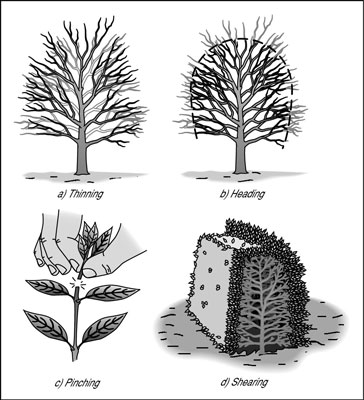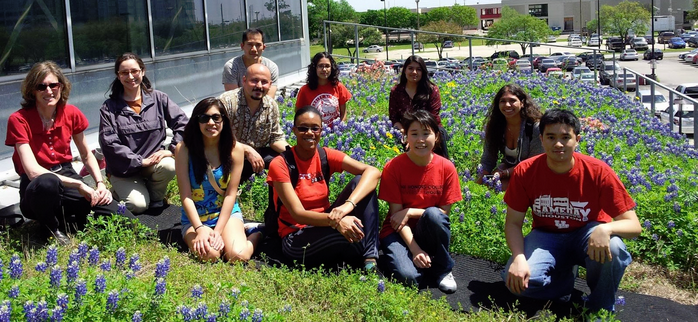Hello, fellow plant lovers!
On February the 25th we had our first green roof workday and it was a HUGE SUCCESS. We managed to cut down all of the beds in just 45 minutes!
For those who do not know, we are managing the Green Roof and it is located right by the Architecture building. We are planning on seeding it with Texas native plants this Thursday (2/27/2014).
Wednesday, February 26, 2014
Monday, February 17, 2014
Mutualism in Bluebonnets
I found some bluebonnets growing on campus last week and decided to plant one in a container in the greenhouse. As I was repotting it, I noticed that this particular specimen had a few nodules in its root system.
 |
| Note the three nodules indicated by the arrows |
These nodules contain Rhizobium bacteria, which can "fix" nitrogen from the gaseous form in the atmosphere to the mineral form that is usable by plants. This is a prime example of mutualism in nature - the plants gain access to the nitrogen from the bacteria, and the bacteria have a safe place to live in the bluebonnet's root system. Of course, bluebonnets don't always form nodules; sometimes, gardeners have to introduce the bacteria via inoculants.
Friday, February 7, 2014
How to Prune Your Plant
 Ever wonder how people get their plants to appear so
perfect? There’s a trick to it – pruning. Pruning is basically training your
plant to grow the way you want it to. Its goal is to improve plant health,
appearance, and restrict certain growth.
Ever wonder how people get their plants to appear so
perfect? There’s a trick to it – pruning. Pruning is basically training your
plant to grow the way you want it to. Its goal is to improve plant health,
appearance, and restrict certain growth.
If you let a plant grow uninterrupted, it will usually grow straight up with little branching, resulting in a tall, lanky, weak and unsupported plant that will easily fall over. However, you can prune it to change this or encourage this.
To do it you will need something sharp, such as a knife,
scissors, or shears. The idea is to make a smooth, clean cut, at a 45º angle.
This allows the plant to heal quickly.
If you want to promote side growth, then prune the topmost new growth. You can cut the leaves or pinch them with your fingers. This will encourage the plant to send out side branches, resulting in a more uniform and bushy plant. If you want your plant to grow more vertically, prune the side growth by pinching them or cutting them off entirely.
If you want to promote side growth, then prune the topmost new growth. You can cut the leaves or pinch them with your fingers. This will encourage the plant to send out side branches, resulting in a more uniform and bushy plant. If you want your plant to grow more vertically, prune the side growth by pinching them or cutting them off entirely.

If you have a perennial plant, you will probably have to cut it back entirely before or after the growing season. That way, it will have new, strong growth later on. With flowers, you need to remove dead flowers to promote growth of new flowers. The same applies to fruiting plants – once the fruits appear and ripen, you should cut them off so that the plant will know to produce more fruit. Pruning also prevents plants from outgrowing their containers too rapidly.
Pruning can be done at anytime but the recommended time varies with the plants. Pruning at the wrong time will not kill the plant but it may weaken the plant. The best time for most plants (there are exceptions) is during late winter or early spring. Since pruning stimulates new growth, if you prune right before winter arrives, the new shoots may die due to the cold.
Subscribe to:
Posts (Atom)





